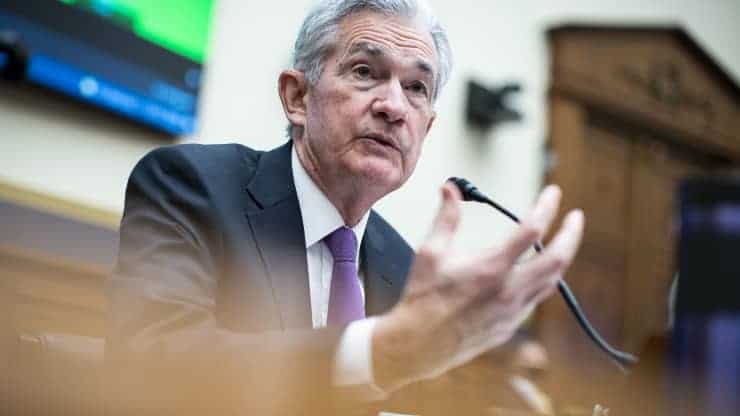
U.S. stocks resumed their sell-off on Monday as government bond yields continued to trek upward, a hint that many traders are growing more certain that the Federal Reserve will move in the next few months to raise interest rates.
Traders say the pressure on U.S. stocks isn’t thanks to material concerns about the economy or fears of a massive Covid-19 resurgence, but portfolio repositioning for a world with higher borrowing costs.
As the nation’s central bank, the Fed is tasked by Congress to maximize employment and keep prices stable. The Fed adjusts short-term interest rates and other liquidity tools to keep inflation around 2% and cut unemployment as much as possible.
When the Fed determines that the economy is close to full employment – and especially if inflation is hot – it hikes interest rates to make it tougher for firms to borrow and to keep a lid on spending that fuels price increases.
The Labor Department reported in December that the prices that consumers pay for goods and services rose more than 6% in November and notched their largest year-over-year jump since 1982.
Many market watchers, including Charles Schwab’s Randy Frederick, say hot inflation prints all but guarantee Fed rate hikes in the coming months. Members of the central bank have already telegraphed that they plan to restrict access to cash faster than first anticipated.
Those expectations have sent the yield on the benchmark 10-year Treasury note higher in recent weeks, with the rate last seen up around 1.77% from a low under 1.4% in December. Movements in the 10-year yield can eventually have a direct impact on consumers through higher mortgage rates and auto loans.
Frederick, director of trading and derivatives at Schwab Center for Financial Research, explained that the market appeared to be caught off guard by Chairman Jerome Powell’s pivot away from calling inflation “transitory” and toward more restrictive monetary policy.
“Those are both efforts aimed at fighting the rising inflation, which I think has gone much farther and much faster than [Powell] had expected,” he said. “So now you have the potential for interest rates, which appeared like they might not start going up until June. Now there’s like an 80% probability that will happen in March.”
Frederick isn’t alone in that thinking. The Fed’s latest meeting minutes, coupled with hot inflation and near-full employment, led Goldman Sachs to tell clients that it now expects four rate hikes in 2022, more than previously expected.
Markets now think there’s an 76% chance the Fed hikes interest rates at the March meeting of the Federal Open Market Committee, up from about 15% in mid-October, according to the CME Group’s FedWatch site.
Monday’s sell-off also comes a day before Powell is set to appear before Congress for his nomination hearing. Lael Brainard, whom President Joe Biden nominated to be the central bank’s next vice chair, will testify on Thursday.
Lawmakers troubled by rising prices at the gas pump and at grocery stores, are expected to grill Powell on how he and his colleagues at the Fed plan to tamp inflation down back toward the Fed’s 2% goal.
But higher rates — or market expectations for higher rates — can cause financial heartburn as traders sell Treasury bonds and richly priced equities.
“In the tech sector, which tends to trade at a very high valuation, there are lots of new companies that have debt and leverage,” Frederick said. Those companies could have a harder time keeping cash on hand “because when that debt expires, it will have to be replaced at a higher rate.”
Among the three major U.S. equity indexes, traders’ recent selling has been concentrated in the stocks that comprise the tech-heavy Nasdaq Composite. The Nasdaq is 8.5% below its all-time high compared to a 3.5% dip for the S&P 500 and a 2.7% drop for the Dow industrials. The Russell 2000, an index that tracks smaller public companies, is more than 12% below its record.
Sectors and stocks considered more financially defensive, with better near-term profit expectations, outperformed. Utilities firms like Xcel Energy and Duke Energy gained while drug manufacturers Merck and Amgen rose 2% and 1%, respectively.